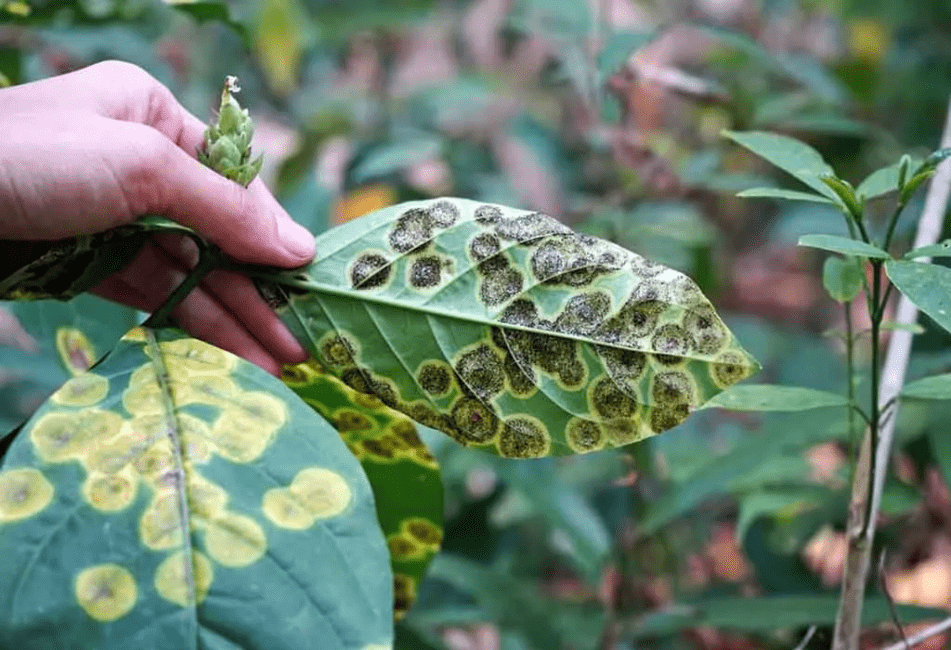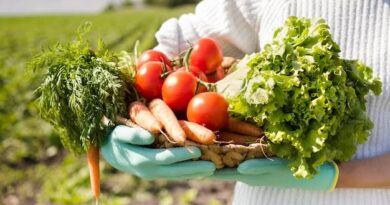Plant Diseases Caused by Living Agents (Biotic, Parasitic, or Infectious)
Understanding plant diseases caused by living agents, such as biotic, parasitic, or infectious organisms, is crucial in maintaining a thriving agricultural system.
When we talk about plant diseases, we’re essentially referring to any harmful deviation from the normal physiological functions of a plant. These deviations can be triggered by a variety of living agents, which encompass a wide spectrum of pests and pathogens that can affect plants in various ways.
Biotic agents, for instance, include living organisms that directly cause diseases in plants. These could be fungal pathogens like powdery mildew or rusts, bacterial pathogens such as fire blight, or viral agents like mosaic viruses. These organisms can attack the plants by invading their tissues, causing visible symptoms like discoloration, deformities, or even death.
Parasitic plants, on the other hand, thrive by establishing a connection with their host plants, siphoning off essential nutrients and resources. Examples of parasitic plants are dodder and mistletoe, which can weaken their hosts significantly and affect their growth and development.
Infectious agents, including various bacteria, fungi, and viruses, can spread rapidly and infect entire plant populations. They often exploit vulnerabilities in plant defenses, compromising their immune systems and causing widespread damage.
To effectively manage and prevent the impact of these diseases, farmers and agricultural experts often employ a range of strategies. These may include implementing crop rotation, using disease-resistant varieties, practicing good hygiene and sanitation in farming practices, and even deploying biological controls or natural predators to combat specific pests.
Recognizing the symptoms and understanding the mechanisms behind these biotic, parasitic, and infectious agents, farmers and growers can proactively safeguard their crops and maintain a sustainable and productive agricultural ecosystem.
Regular monitoring, early detection, and timely intervention are key in mitigating the adverse effects of these plant diseases, ensuring a stable and secure food supply for our communities.
Read Also: 17 Medicinal Health Benefits Of Reynoutria multiflora (Japanese Knotweed)
Plant Diseases Caused by Living Agents (Biotic, Parasitic, or Infectious)

1. Fungi
Commonly known as molds, fungi (singular = fungus) are mostly microscopic organisms that have bodies (mycelium) composed of multi-cellular, thread-like, branched filaments (hyphae) and reproductive structures called spores.
Since they do not possess chlorophyll, fungi depend on either dead organic matter or living plants for their growth and reproduction. Some fungi produce vitamins and antibiotics that are useful to us.
A few fungi, like some types of mushrooms and morels, are edible. On the other hand, some fungi thrive on living plants, drawing their nutrition from them and sometimes producing toxins that cause disease and death of the plants they infect.
These are called plant pathogenic fungi. A majority of diseases in plants are caused by fungi.
Some examples commonly encountered in home gardens and landscape trees are brown rot of cherries, apple scab, black spot of rose, snapdragon rust, corn smut, powdery mildew of rose, peach leaf curl, sycamore anthracnose, the early blight of potato, Verticillium wilt of tomato, damping-off, and root rot of vegetables.
Read Also: Fungicides: 14 Ultimate Guide to Effective Use of Fungicide
2. Bacteria and Phytoplasmas
Bacteria (singular = bacterium) and phytoplasmas (formerly known as mycoplasmas or mycoplasma-like organisms) are microscopic, single-celled organisms that cause some of the most destructive diseases in plants.
Some bacteria, like those that induce nodulation in leguminous plants, are beneficial to plants because they fix nitrogen from the air into the root nodules in a form that the host plant can utilize for its growth.
Phytoplasmas are a type of bacteria that lack distinct cell walls. Under favorable conditions, bacteria reproduce very rapidly and can cause serious damage in a short period of time.
Bacterial pathogens are spread by wind-splashed rain, insects, contaminated seed, or implements. Bacterial diseases are relatively difficult to control because there are very few chemicals that are effective against them.
Some commonly encountered bacterial diseases are crown gall of rose, grape, apple, cherry, and other ornamental plants; fire blight of apple and pear; soft rot of potato; ring rot of potato; and aster yellows phytoplasma on carrots, tomatoes, onions, lettuce, etc.
Read Also: Guide to Plant Diseases and Disease Management
3. Viruses
Viruses are infectious agents so small they must be observed through an electron microscope. Particles of these viruses may be in the form of rods, spheres, or threads. They are composed mainly of a nucleic acid core surrounded by a protein coat.
Viruses can multiply only in a living host cell and can often spread systemically throughout the infected plant. Viruses can be transmitted from infected to healthy plants mechanically, through grafts, and by contaminated propagating material.
Viruses can also be transmitted by certain organisms, referred to as vectors. In addition to insects (primarily aphids, white flies, leafhoppers, and beetles), virus vectors include mites, nematodes, and fungi in the soil.
Viral diseases are not controlled by pesticide chemicals. Examples of viral diseases are curly top of the tomato, bean, cucurbits, etc.; potato leaf roll; bean common mosaic; and rose mosaic.
Read Also: What are Fungal Diseases in Plants?
4. Nematodes
Nematodes are microscopic roundworms that live in soil as well as water and survive as eggs or cysts. Most of them are saprophytes, but some infect living plants and cause diseases.
Most plant-parasitic nematodes feed on the underground parts of the plants (roots, tubers, bulbs, etc.) causing lesions or root knots. However, a few nematodes also affect the buds, leaves, flowers, and stems of plants.
Nematodes spread through contaminated planting material (tubers, seedlings, etc.), manure, soil, water, machinery, and implements. Some nematodes are vectors of plant viruses.
Some examples of plant parasitic nematodes are root-knot nematodes of tomato, potato, beans, and many other plants; root lesion nematodes of corn and potatoes, cyst nematodes of sugarbeets; stubby root nematodes of corn; stem and bulb nematodes of onion; and foliar nematode of chrysanthemum. E. Parasitic Higher (Flowering) Plants Several flowers- and seed-producing plants live as parasites on other plants (host plants), deriving their nutrition from them and adversely affecting the host plant’s growth and yield.
Dodder (also known as strangling weed and devil’s hair), for example, parasitizes several garden plants such as potatoes and carrots. It produces orange or yellow vine strands that entwine the stems and other plant parts from which it draws its nutrition through tube-like structures it introduces into the host tissue.
Dodder produces abundant seeds that ensure its propagation and spread. Another example of a parasitic plant is dwarf mistletoes on pines.
Read Also: Food Contamination/Pollution and Sources of Food Contamination









